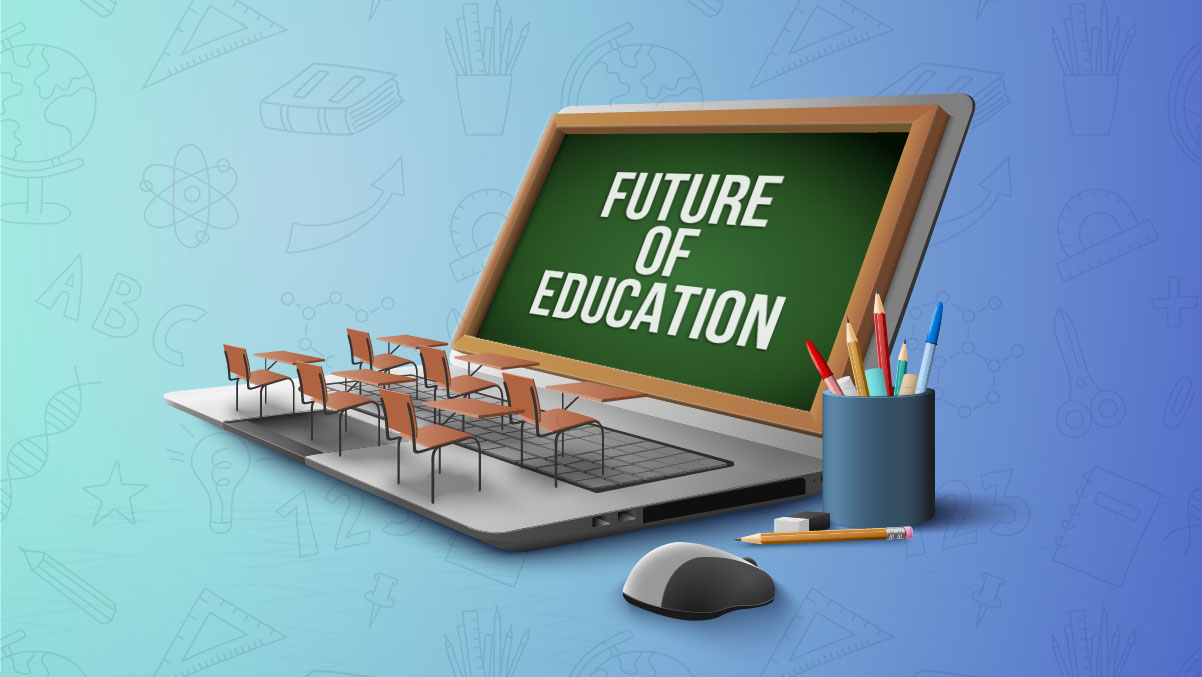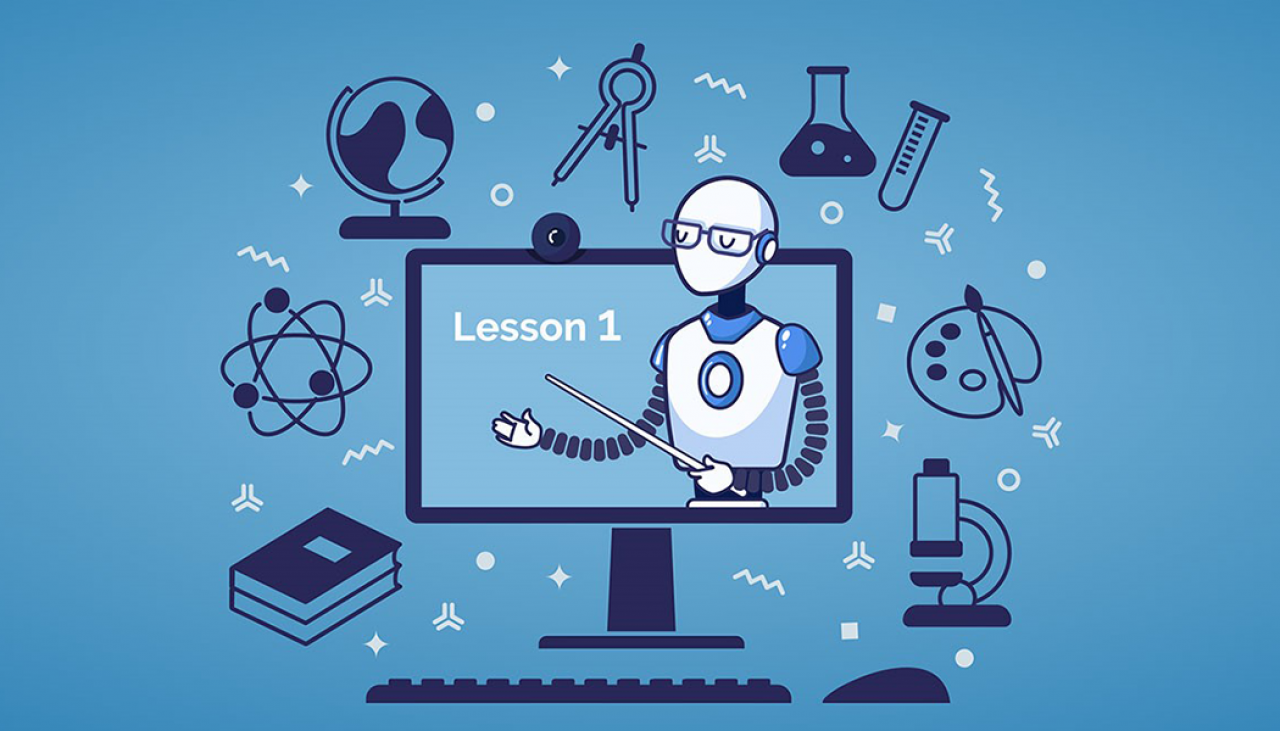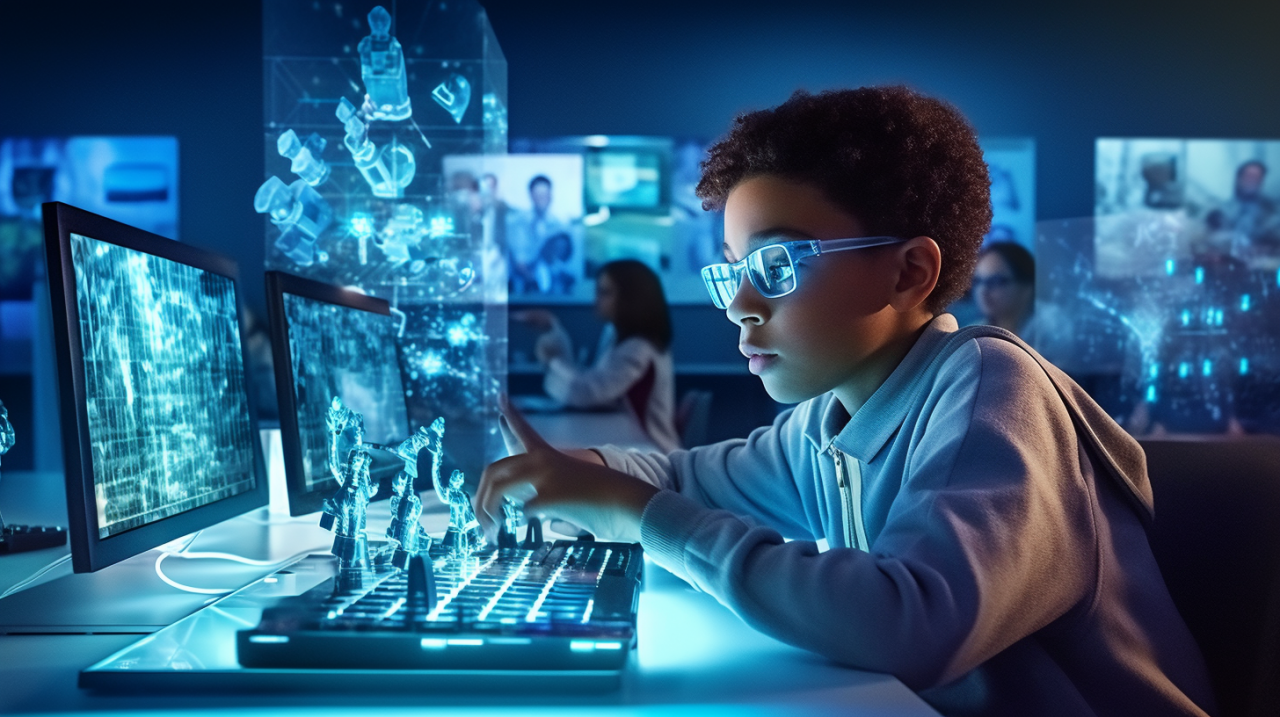The role of technology in transforming the future of education – Technology’s role in transforming the future of education is undeniable. Forget dusty textbooks and chalkboards – we’re diving headfirst into a world where personalized learning paths, AI-powered tutors, and virtual classrooms are the new normal. This isn’t just about gadgets; it’s a complete overhaul of how we teach and learn, impacting everything from accessibility for students in remote areas to the very skills we need to thrive in the digital age.
Get ready for a wild ride!
This exploration delves into the exciting possibilities and challenges presented by this technological revolution. We’ll examine how personalized learning experiences are being tailored to individual needs, the crucial role of technology in bridging the digital divide and fostering inclusivity, and the innovative teaching methods emerging to engage students in dynamic new ways. We’ll also discuss the ethical considerations surrounding AI in education and how educational institutions are adapting to this ever-evolving landscape.
Buckle up – the future of learning is here.
Personalized Learning Experiences

Technology is revolutionizing education, moving away from the one-size-fits-all approach to a more individualized and adaptive learning environment. Personalized learning leverages technology to cater to the unique needs, learning styles, and paces of each student, fostering a more engaging and effective educational experience. This shift empowers students to learn at their own speed, focusing on areas where they need extra support and accelerating through concepts they grasp quickly.Personalized learning paths, enabled by technology, allow educators to address the diverse learning styles and needs present in any classroom.
Instead of a uniform curriculum delivered to all students simultaneously, technology allows for differentiated instruction tailored to individual learning preferences. This approach recognizes that students learn differently – some are visual learners, others auditory, and some kinesthetic. Technology provides the tools to adapt the learning experience to suit these varied preferences.
Adaptive Learning Technologies
Several educational technologies are designed to adapt to individual student progress and learning preferences. Adaptive learning platforms use algorithms to analyze student performance, identify knowledge gaps, and adjust the difficulty and content of lessons accordingly. For instance, Khan Academy’s adaptive practice exercises provide customized feedback and adjust the level of difficulty based on the student’s responses. Other platforms, such as DreamBox Learning and IXL, offer similar adaptive features across various subjects.
These platforms track student progress in real-time, providing valuable data for both students and teachers to monitor learning and identify areas needing improvement.
Benefits and Challenges of Technology-Powered Personalized Learning, The role of technology in transforming the future of education
The benefits of technology-driven personalized learning are significant. Students experience increased engagement and motivation when learning is tailored to their interests and abilities. They also demonstrate improved academic performance, as they receive targeted support in areas where they struggle and can move ahead at their own pace in areas where they excel. Furthermore, teachers gain valuable insights into student learning through data analytics, allowing them to adjust their teaching strategies and provide more effective support.However, implementing personalized learning powered by technology presents challenges.
The initial cost of acquiring and implementing the necessary technology can be substantial. Effective use also requires significant teacher training and ongoing professional development to leverage the technology effectively. Moreover, ensuring equitable access to technology and high-speed internet for all students remains a critical challenge, particularly in underserved communities. Addressing these challenges is crucial to realizing the full potential of personalized learning for all students.
Hypothetical Learning Scenario: Personalized vs. Traditional Approach
Consider a scenario where students are learning about the solar system. The following table compares a traditional approach with a technology-enhanced, personalized approach:
| Aspect | Traditional Approach | Technology-Enhanced Approach |
|---|---|---|
| Instructional Method | Lecture-based teaching, textbook readings, and group assignments. All students receive the same information at the same pace. | Interactive simulations, personalized learning pathways based on student assessments, access to diverse multimedia resources (videos, 3D models), and adaptive quizzes that adjust difficulty based on student performance. |
| Assessment | Uniform tests and assignments assessing the same knowledge for all students. | Continuous assessment through quizzes, projects, and interactive exercises. Adaptive assessments identify knowledge gaps and adjust the learning path accordingly. Feedback is immediate and personalized. |
| Pace of Learning | Fixed pace dictated by the teacher and curriculum. Students who grasp concepts quickly may get bored, while those who need more time may fall behind. | Flexible pace allowing students to progress at their own speed. Students can revisit concepts as needed or move ahead when ready. |
| Learning Resources | Limited to textbook and teacher-provided materials. | Access to a vast library of digital resources, including videos, interactive simulations, and online articles, tailored to individual learning styles and interests. |
Accessibility and Inclusivity: The Role Of Technology In Transforming The Future Of Education

Technology’s transformative power in education extends beyond personalized learning; it’s revolutionizing accessibility and inclusivity, breaking down barriers for students who were previously marginalized. This includes students in remote areas with limited access to traditional schools and students with disabilities who face unique learning challenges. The integration of technology offers unprecedented opportunities to create a more equitable and inclusive learning environment for all.Technology expands access to education for students in geographically isolated areas or those with disabilities by providing alternative learning pathways and tools.
Online learning platforms, for instance, offer courses and resources that can be accessed anytime, anywhere with an internet connection. This eliminates the need for physical travel to a school, a significant hurdle for students in remote villages or those with mobility limitations. Furthermore, assistive technologies are bridging the gap for students with diverse learning needs, empowering them to participate fully in the educational process.
Assistive Technologies for Diverse Learners
Assistive technologies encompass a wide range of tools and software designed to support students with disabilities. Text-to-speech software, for example, converts written text into audio, benefiting students with visual impairments or dyslexia. Screen readers provide auditory descriptions of on-screen content, enabling blind students to navigate computers and access educational materials. Speech-to-text software allows students with physical limitations to create written assignments using voice input.
Specialized software can also provide visual aids for students with learning differences, such as dysgraphia or ADHD, helping them organize information and improve their writing skills. For example, programs can highlight key words, provide visual timers for tasks, and offer structured templates for writing assignments. These technologies are not just aids; they are powerful tools that empower students to achieve their full potential.
Challenges in Ensuring Equitable Access
While technology offers immense potential, ensuring equitable access presents significant challenges. The digital divide, the gap between those with access to technology and those without, remains a major obstacle. This divide often disproportionately affects students from low-income families, rural communities, and marginalized groups. Lack of reliable internet access, affordable devices, and adequate digital literacy training are key barriers.
Furthermore, the effective integration of assistive technologies requires specialized training for educators and ongoing technical support. The cost of purchasing and maintaining these technologies can also be prohibitive for some schools and families. Without addressing these challenges, the promise of technology-enhanced education risks exacerbating existing inequalities.
Strategies for Bridging the Digital Divide and Promoting Inclusivity
Addressing the challenges requires a multi-pronged approach.
- Expand broadband infrastructure: Investing in reliable and affordable internet access in underserved areas is crucial. This includes initiatives to extend fiber optic networks and provide subsidized internet services to low-income families.
- Provide affordable devices and software: Governments and organizations should implement programs to distribute low-cost or free devices and assistive technologies to students who need them. This could involve partnerships with technology companies and charitable organizations.
- Invest in digital literacy training: Comprehensive digital literacy training is essential for both students and educators. This includes training on using assistive technologies, online learning platforms, and digital tools for teaching and learning.
- Develop culturally relevant and accessible educational content: Educational materials should be designed to be accessible to students with diverse learning styles and needs. This includes providing materials in multiple formats and languages, and incorporating universal design principles.
- Promote collaboration and partnerships: Effective solutions require collaboration between schools, governments, technology companies, and community organizations. Partnerships can leverage resources and expertise to create sustainable and impactful programs.
Enhanced Teaching and Learning Methods

Technology is revolutionizing education, moving beyond simple digitalization to fundamentally reshape how we teach and learn. Interactive whiteboards, educational apps, and online learning platforms are no longer novelties; they’re becoming integral components of effective pedagogy, fostering a more engaging and personalized learning environment. This shift allows educators to cater to diverse learning styles and create dynamic classrooms that actively involve students in the learning process.Technology empowers educators to transform traditional, often passive, teaching methods into active, engaging experiences.
Instead of relying solely on lectures, teachers can utilize interactive simulations, virtual field trips, and gamified learning to capture students’ attention and deepen their understanding of complex concepts. This approach moves away from rote memorization and encourages critical thinking, problem-solving, and collaboration—essential skills for success in the 21st century.
Innovative Teaching Strategies Leveraging Technology
The integration of technology facilitates a range of innovative teaching strategies. For instance, collaborative projects using shared online documents or platforms like Google Classroom allow students to work together seamlessly, regardless of their physical location. Interactive simulations, such as those used to model scientific phenomena or historical events, offer immersive learning experiences that go beyond textbook explanations. Furthermore, educational games and apps can transform dry subjects into engaging challenges, motivating students to actively participate and master concepts at their own pace.
The use of data analytics from learning platforms allows teachers to personalize learning pathways, identify knowledge gaps, and provide targeted support.
Comparison of Technology-Integrated and Traditional Teaching Methods
Technology-integrated teaching methods offer several advantages over traditional approaches. Studies have shown that students engaged in technology-enhanced learning often demonstrate improved academic performance, increased motivation, and enhanced collaboration skills. However, effective implementation requires careful planning and teacher training. Traditional methods, while familiar and comfortable for some educators, may struggle to keep pace with the rapidly evolving needs of today’s students and the demands of a technologically advanced world.
The most effective approach often involves a blended learning model, combining the best aspects of both traditional and technology-integrated methods.
Tech is revolutionizing education, creating more flexible and accessible learning pathways. This includes simplifying the process of academic credit transfer, a crucial aspect for many students. For those navigating this, understanding how to transfer college credits between different institutions, as detailed in this helpful guide how to transfer college credits between different institutions , is key. Ultimately, these technological advancements promise a more personalized and efficient educational experience for everyone.
Example Lesson Plan: Integrating Technology for Enhanced Engagement
This lesson plan focuses on teaching the water cycle to a 5th-grade class. Topic: The Water Cycle Objective: Students will be able to explain the different stages of the water cycle and their interconnections. Technology Integration: The lesson will utilize an interactive whiteboard to display diagrams and animations of the water cycle. Students will use tablets to access a virtual lab simulation where they can manipulate variables (e.g., temperature, sunlight) and observe their effects on the water cycle.
Following the simulation, students will work collaboratively using a shared online document to create a presentation summarizing their findings. Lesson Activities:
1. Introduction (15 minutes)
Begin with a captivating video about the water cycle shown on the interactive whiteboard.
2. Interactive Simulation (30 minutes)
Students use tablets to explore the virtual lab, recording their observations and answering guided questions.
Tech’s role in revolutionizing education is undeniable, offering personalized learning and global access. However, the soaring costs of higher education, and the subsequent impact, as explored in this insightful article on the impact of student loan debt on career choices after graduation , significantly influence students’ post-grad paths. Ultimately, technology must also address affordability to truly democratize access to quality education and empower graduates.
3. Collaborative Presentation (30 minutes)
Students work in groups using a shared online document to create a presentation summarizing their findings from the simulation.
4. Class Discussion and Review (15 minutes)
The class reviews the presentations, addressing any misconceptions and reinforcing key concepts.This lesson plan effectively uses technology to transform a potentially dry topic into an engaging and interactive learning experience. The virtual lab simulation provides a hands-on experience that allows students to actively explore the concepts, while the collaborative presentation fosters teamwork and communication skills. The interactive whiteboard enhances visual learning, while the use of tablets caters to diverse learning styles and promotes student autonomy.
The combination of visual aids, hands-on activities, and collaborative work significantly enhances student engagement and understanding compared to a traditional lecture-based approach.
The Role of Artificial Intelligence in Education
Artificial intelligence (AI) is rapidly transforming various sectors, and education is no exception. Its potential to personalize learning, automate tasks, and provide valuable insights is reshaping the educational landscape, promising a more efficient and effective learning experience for students of all backgrounds. However, its implementation also raises crucial ethical considerations that must be carefully addressed.
AI Applications in Education
AI offers a multitude of applications within the educational sphere. Personalized tutoring systems, for example, can adapt to individual student needs, providing customized learning paths and targeted support. Automated grading systems can free up educators’ time, allowing them to focus on more interactive and engaging teaching methods. Furthermore, intelligent learning platforms can analyze student performance, identify knowledge gaps, and recommend relevant learning resources, fostering a more proactive and self-directed learning environment.
Khan Academy’s personalized learning platform is a prime example of this, using AI to adapt to individual student progress and suggest relevant exercises and videos. Similarly, Grammarly utilizes AI to provide personalized feedback on writing, improving students’ grammar and writing skills.
Ethical Considerations and Potential Risks of AI in Education
The integration of AI in education necessitates a careful consideration of ethical implications. Bias in algorithms, for instance, can perpetuate existing inequalities if not properly addressed. Data privacy concerns are also paramount, requiring robust security measures to protect sensitive student information. Over-reliance on AI-driven systems could potentially diminish the role of human interaction and personalized attention from teachers, impacting the social and emotional development of students.
The potential for AI to exacerbate existing achievement gaps, particularly for students from disadvantaged backgrounds, also needs to be carefully examined and mitigated through thoughtful implementation and ongoing monitoring.
AI-Driven Data Analysis for Educational Improvement
AI can analyze vast amounts of student data, providing valuable insights into learning patterns, identifying at-risk students, and informing instructional strategies. By analyzing student performance on assessments, engagement levels in online learning platforms, and even patterns in their written work, educators can gain a deeper understanding of individual learning styles and needs. This data-driven approach enables teachers to tailor their teaching methods to better meet the diverse needs of their students, leading to improved learning outcomes.
For example, AI can identify students struggling with specific concepts and flag them for additional support before they fall significantly behind.
Visual Representation of AI in Education: A Balanced Perspective
Imagine a balanced scale. On one side, we have a vibrant, upward-trending graph representing the potential benefits of AI in education: personalized learning, increased efficiency, data-driven insights, and accessibility improvements. On the other side, a smaller, less steep graph represents the challenges: algorithmic bias, data privacy concerns, the risk of over-reliance on technology, and the need for ethical considerations and responsible implementation.
The scale itself is slightly tilted towards the benefits side, but the presence of the challenges side emphasizes the need for a balanced and cautious approach to integrating AI in education, ensuring equitable access and positive learning outcomes for all students. The image underscores the fact that while AI offers tremendous potential, careful planning, ethical considerations, and ongoing monitoring are crucial for its successful and responsible integration into the educational system.
The Future of Educational Institutions
Technology is revolutionizing the landscape of educational institutions, transforming both physical and virtual learning environments. This shift is driven by the need for more flexible, personalized, and accessible education, catering to the diverse needs of a rapidly evolving global society. The integration of technology is not merely about adding gadgets; it’s about fundamentally reimagining the role of educational spaces and the pedagogical approaches employed within them.
Reshaping Physical and Virtual Spaces
The traditional classroom is being redefined. Physical spaces are becoming more collaborative and adaptable, incorporating flexible furniture arrangements, interactive whiteboards, and maker spaces equipped with 3D printers and other technological tools. Simultaneously, the rise of virtual learning environments (VLEs) provides access to education anytime, anywhere. These VLEs offer a rich array of digital resources, interactive simulations, and collaborative platforms, breaking down geographical barriers and fostering a more inclusive learning experience.
For instance, universities are investing in sophisticated virtual reality (VR) labs, allowing students to experience historical events, dissect virtual organs, or explore the intricacies of a complex machine, all within a safe and controlled digital environment. Furthermore, the integration of smart classrooms, equipped with sensors and AI-powered analytics, allows for real-time monitoring of student engagement and personalized learning adjustments.
Innovative Educational Models Leveraging Technology
Technology fuels the emergence of innovative educational models that prioritize personalized learning pathways. Flipped classrooms, where students engage with learning materials independently before attending interactive classroom sessions, are becoming increasingly common. Blended learning models seamlessly integrate online and offline learning experiences, tailoring the approach to individual student needs and learning styles. Micro-learning platforms, offering bite-sized learning modules, cater to the shorter attention spans and diverse learning preferences of modern students.
Khan Academy’s online courses and Coursera’s massive open online courses (MOOCs) are prime examples of this trend, providing accessible and high-quality education to a global audience. Furthermore, personalized learning platforms utilizing AI-powered adaptive learning systems are becoming increasingly sophisticated, adjusting the difficulty and content based on individual student progress.
Implications for Educators and Administrators
The integration of technology significantly impacts the roles and responsibilities of educators and administrators. Educators are transitioning from being primarily content deliverers to facilitators of learning, guiding students through personalized learning journeys and fostering collaborative learning experiences. They require ongoing professional development to effectively utilize technology and integrate it into their teaching methodologies. Administrators, meanwhile, must focus on creating a supportive technological infrastructure, ensuring equitable access to technology, and managing the integration of technology across the institution.
This includes overseeing the selection and implementation of appropriate learning technologies, providing technical support, and developing effective data-driven strategies to enhance learning outcomes. The need for data literacy and the ability to interpret and utilize educational analytics is paramount for both educators and administrators.
Conceptual Model for a Future-Ready Educational Institution
A future-ready educational institution seamlessly integrates technology into all aspects of its operations, fostering a culture of innovation and personalized learning. This institution would feature: a robust and secure technological infrastructure; a diverse range of learning spaces, including traditional classrooms, collaborative hubs, maker spaces, and virtual learning environments; a personalized learning platform powered by AI, providing adaptive learning pathways and real-time feedback; a strong focus on digital literacy and professional development for educators; and a data-driven approach to continuous improvement, using educational analytics to inform pedagogical practices and resource allocation.
This model would prioritize accessibility and inclusivity, ensuring that all learners have equal opportunities to succeed, regardless of their background or learning style. The institution would also foster partnerships with industry and community organizations, providing students with relevant skills and experiences for the future workforce.
Developing Digital Literacy Skills

In today’s increasingly digital world, digital literacy is no longer a luxury but a necessity. It’s the foundation upon which students can build successful futures, navigate information effectively, and participate fully in society. Developing strong digital literacy skills empowers students to become critical thinkers, responsible digital citizens, and creators of digital content, not just passive consumers.The importance of developing digital literacy skills for students cannot be overstated.
Proficiency in navigating the digital landscape is crucial for academic success, career prospects, and effective participation in society. Without these skills, students risk being left behind in a world increasingly reliant on technology. This extends beyond simply knowing how to use a computer; it encompasses critical thinking, information evaluation, online safety, and ethical digital citizenship.
Strategies for Teaching Digital Literacy
Effective strategies for teaching digital literacy must be tailored to different age groups and learning styles. Younger students might benefit from interactive games and storytelling that teach online safety and responsible digital behavior. Older students can engage in more complex activities such as creating digital projects, analyzing online information for bias, and understanding the ethical implications of data privacy.
A multi-faceted approach, integrating digital literacy across various subjects, proves most effective.
- Elementary School: Interactive games focusing on online safety, identifying credible sources, and basic computer skills.
- Middle School: Project-based learning involving creating digital presentations, researching topics online, and practicing responsible social media use.
- High School: Advanced research projects utilizing diverse digital tools, analyzing online information for bias and credibility, and exploring ethical considerations of data and AI.
Challenges in Ensuring Equitable Access to Digital Literacy
Ensuring all students have access to quality digital literacy education presents significant challenges. These include the digital divide, where some students lack access to technology or reliable internet at home; disparities in teacher training and resources; and the need for culturally relevant and inclusive curricula that address the diverse needs of all learners. Addressing these challenges requires a concerted effort from educators, policymakers, and technology providers to bridge the gap and create equitable opportunities for all students.
A Digital Literacy Curriculum
A comprehensive digital literacy curriculum should incorporate a variety of interactive activities and assessments to engage students and track their progress. The curriculum should be designed to be flexible and adaptable to different age groups and learning styles.
| Grade Level | Topics | Activities | Assessments |
|---|---|---|---|
| 3-5 | Internet Safety, Basic Computer Skills, Identifying Credible Sources | Interactive games, storytelling, online scavenger hunts | Quizzes, presentations, practical exercises |
| 6-8 | Social Media Responsibility, Digital Citizenship, Research Skills, Creating Digital Content | Project-based learning, collaborative projects, creating digital presentations | Rubrics, peer reviews, self-assessments |
| 9-12 | Data Privacy, Cybersecurity, Critical Evaluation of Online Information, Ethical Use of Technology | Research projects, debates, simulations, creating digital portfolios | Research papers, presentations, case studies, portfolio reviews |